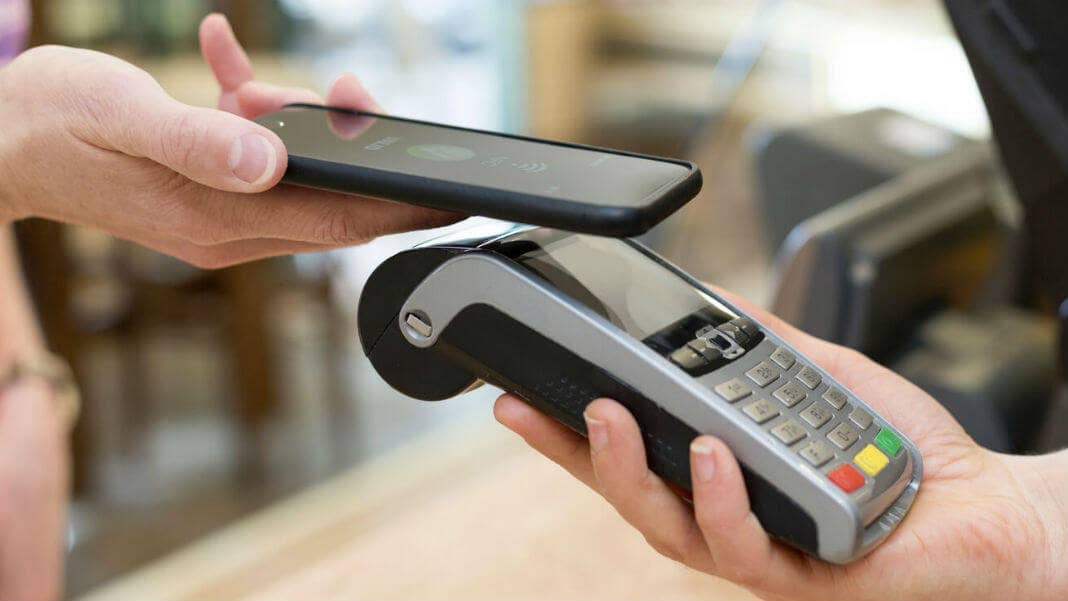Apple Pay Poised for Dominance and What That Means for the Future of Credit Cards

Share
Apple Pay was launched last year, with lots of fanfare and support by the credit card industry. Partnering with the banks that issue credit cards overcame the resistance that early entrants in mobile payments had faced. It also solved critical technology and infrastructure problems and offered the credit card industry a new avenue for growth. Apple Pay isn’t a household name yet, but it is growing steadily and is likely to become one. Most recently, Apple announced a deal with China’s UnionPay, the state-run sole issuer of bankcards, to allow it to operate nationwide in the People’s Republic.
Apple Pay is, however, a Trojan horse. Once Apple has established its platform, it won’t need the banks and credit cards any more. It will be able take advantage of another new technology, the blockchain, to offer an alternative payment option. Blockchain is the core technology behind Bitcoin, and functions as a transparent ledger of transactions, concurrently hosted on numerous computers around the world — allowing the creation of digital currencies and virtual banks.
Think about it: today you have a choice between American Express, MasterCard, and Visa, and they charge merchants roughly 2 percent of every transaction. If you were given another payment option, let’s call it AppleCoin, which provided you with a rebate of this fee, and the transaction was easier and more secure than with a credit card, which would you pick? I doubt many people would show loyalty to the credit card industry. After all, it extracts more than $100 billion in fees — a tax that we end up paying for — and gouges us the moment we miss a payment. Apple would dominate this industry.
To be clear, Apple’s payment application has not taken off yet and works only on the latest model of its smartphones. According to data from payments-industry tracker Pymnts.com, as of October 2015, only 15 percent of all iPhone 6/6s users had tried Apple Pay. That is an increase from 9 percent in November 2014, but is hardly enough to set the world on fire. More significantly, only 5.1 percent of all Apple Pay eligible transactions (meaning, in which the store has an Apple Pay terminal and the shopper has an iPhone 6/6s) are running through the service. Because iPhone 6/6s models remain a small proportion of all iPhones in use, Apple Pay is capturing only a tiny volume of transactions.
But Apple has time on its side. And you can bet that Apple understands that the prize in play for global mobile payments is a larger market than that for phones, music, and computers combined. In classic Apple fashion, it is positioning itself to be a disruptive broker. According to industry newsletter The Nilson Report, the total of consumer and commercial purchases at merchants and cash obtained from credit and debit cards was $20.567 trillion in 2013. The value to Apple isn’t just transaction fees; it is the massive treasure trove of user data. So yes, Apple is going to continue to improve on Apple Pay for quite a while.
Apple’s advantages are that the iPhone has a cult-like following. And every time users buy a new phone or upgrade to a new version of iOS, Apple has a chance to convince them to try Apple Pay. In no other business does an incumbent have so many opportunities to entice upgrades. This is particularly important considering that the major reason Apple Pay-eligible users give for not using the service is that they simply forget it exists. Changing habits takes time, and Apple has plenty of that with these users.
Financially, too, Apple also has many levers that it can push. It could offer credits on purchases of an iPhone and at the iTunes store, as well as exclusive discounts. The rebates for credit card fees could be used to buy music on iTunes, movies on Apple TV, or iPhone accessories. True, there are presently very few outlets that accept Apple Pay; but once it gains momentum, practically every retailer will find it necessary to install an Apple Pay terminal or an add-on to their iPhones that will act as one.
Be Part of the Future
Sign up to receive top stories about groundbreaking technologies and visionary thinkers from SingularityHub.


The credit card companies have not done themselves a favor in forcing merchants to install a new chip-and-pin technology. The merchants are already complaining that reading the computer chips on credit cards takes a long time, annoying shoppers and costing money in lost transactions. This is bitter medicine for merchants who, with the new system, are now being forced to swallow liabilities for fraud that previously lay with the banks and credit cards. And though chip-and-pin transactions in Europe require both the chip in the card and a passcode, in the United States, terminals only require the chip. So the new format may reduce some card fraud, but is not all that much more secure than the old.
Compare this triple negative with an Apple Pay experience. Being lightning fast, it may slice 30 seconds off a chip-and-pin credit card transaction. The fingerprint it uses as the second factor of authentication (aside from the chip in the iPhone) not only is more secure than the four-digit passcode; it also requires less work and cannot be stolen easily or leaked wholesale, due to biometrics’ cryptographic storage. And Apple does not store the entire credit-card number on the phone, so if the phone is stolen, that information is not taken with it.
Let’s just take it as a given that Apple Pay achieves significant market penetration. What then? Another upstart payments company, Square, gives us a flavor of what is possible when technology companies control the payments infrastructure. Square is now offering loans to its merchants without the merchants even requesting it. What’s more, it is basing the loan offering on the transaction volume it sees the merchant processing. And Square is taking repayment directly out of the transaction stream. Apple could easily do something like this, either for consumers or for merchants. With data and coverage come insights and smarter ways to do business.
All of this will hurt the credit card industry, but will be a boon for consumers. Technology is enabling entrenched interests, the middlemen, to be sidelined. This will mean lower fees, better service, and faster transactions—and not having to deal with those annoying credit-card offers in the mail. Best of all, we won’t need to carry paper money and credit cards any more.
Image credit: Jason Howie/FlickrCC
Vivek Wadhwa is Distinguished Fellow and professor at Carnegie Mellon University Engineering at Silicon Valley and a director of research at Center for Entrepreneurship and Research Commercialization at Duke. His past appointments include Stanford Law School, the University of California, Berkeley, Harvard Law School, and Emory University.
Related Articles

These Brain Implants Are Smaller Than Cells and Can Be Injected Into Veins

Super Precise 3D Printer Uses a Mosquito’s Needle-Like Mouth as a Nozzle

Is the AI Bubble About to Burst? What to Watch for as the Markets Wobble
What we’re reading